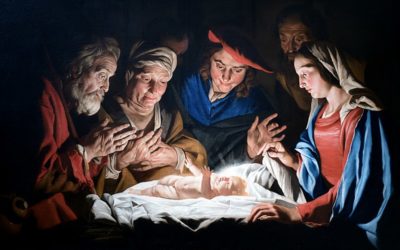Doctrine and Covenants sections 85‒87, which date to the last two months of 1832, arose during the course of Joseph Smith’s life as he went about fulfilling his duties as prophet. Section 85 came while he was writing a letter. Section 86 came as he was translating the Bible. Section 87 came as he was pondering the global challenges of his day.
Doctrine and Covenants 85
Joseph Smith went from being someone who didn’t keep records to someone who was conscious of the importance of record-keeping and sought to keep records as the Lord commanded. In November 1832, Joseph began keeping a journal and a record book of the letters he wrote. Section 85 of the Doctrine and Covenants is an extract from the first letter Joseph retained for his first letterbook.
For the entire letter, click here. For additional information about the history of this section, click here.
The first five verses of section 85 emphasize the importance of keeping records. Verses 6‒8 warn those who would “steady the ark of God” not to do so. Verses 9‒12 explain that those who do not live so as to have their names enrolled in God’s book of remembrance will be like the children of the priest mentioned in the Old Testament who were found “polluted” and thus “put from the priesthood” (Ezra 2:62).
Doctrine and Covenants 86
On December 6, 1832, Joseph was working on his new translation of the Bible and received a revelation explaining the parable of the wheat and tares contained in Matthew 13 of the New Testament. The revelation was of particular interest to the Saints as they sought to warn their neighbors to flee the wrath to come and gather to the city of Zion.
For more on this history of this section, click here.
Verses 1‒4 explain that the blades of wheat were still tender at the time. For that reason, in verse 7 the Lord commands, “Let the wheat and the tares grow together until the harvest is fully ripe; then ye shall first gather out the wheat from among the tares, and after the gathering of the wheat, behold and lo, the tares are bound in bundles, and the field remaineth to be burned.”
Verses 8‒10 interestingly explain that some among the Church members hold a priesthood that “hath continued through the lineage of your fathers,” making them “lawful heirs, according to the flesh” who “have been hid from the world with Christ in God. That priesthood “must needs remain through you and your lineage until the restoration of all things spoken by the mouths of all the holy prophets since the world began.”
Doctrine and Covenants 87
On Christmas day in 1832, Joseph Smith received one of his most famous revelations, which foretold the outbreak of war beginning in South Carolina. Many have interpreted this as a prophecy of the Civil War that broke out in the United States in 1861. For the relationship of this section to the nullification crisis of 1832 and other historical background, click here.
For the Saints in 1832, the key point was that wars were about to break out that would “terminate in the death and misery of many souls” (verse 1) and eventually include world wars (verse 2). This violence would bring about God’s chastening, leading to “a full end of all nations” (verse 6). The Saints were therefore commanded, “Stand ye in holy places, and be not moved, until the day of the Lord come” (verse 8).
Credit for image at top of page: Stock photo from depositphotos.com



